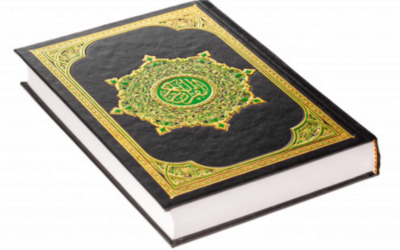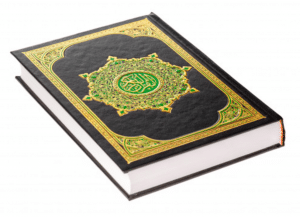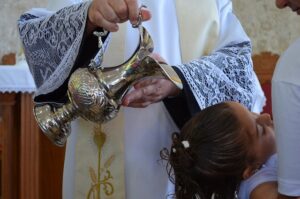Artemas Cunningham, of Perry, Genuga county, states as follow:
“In the month of October 1811, I went from the township of Madison to Conneaut, for the purpose of securing a debt due me from Solomon Spalding. I tarried with him nearly two days, for the purpose of accomplishing my object, which I was finally unable to do. I found him destitute of the means of paying his debts. His only hope of ever paying his debts appeared to bear upon the sale of a book, which he had been writing. He endeavored to convince me from the nature and character of the work, that it would meet with a ready sale. Before showing me his manuscripts, he went into a verbal relation of its outlines, saying that it was a fabulous or romantic history of the first settlement of this country, and as it purported to have been a record found buried in the earth, or in a cave, he had adopted the ancient or scripture style of writing. He then presented his manuscripts, when we sat down and spent a good share of the night, in reading them and conversing upon them. I well remember the name of Nephi, which appeared to be the principal hero of the story. The frequent repetition of the phrase, “I Nephi,” I recollect as distinctly as though it was but yesterday, although the general features of the story have passed from my memory, through the lapse of 22 years. He attempted to account for the numerous antiquities which are found upon this continent and remarked that, after this generation had passed away, his account of the first inhabitants of America would be considered as authentic as any other history. The Mormon Bible I have partially examined, and am fully of the opinion that Solomon Spalding had written its outlines before he left Conneaut.”
Statements of the same import might be multiplied to an indefinite length, but we deem it unnecessary. We are here willing to rest the question, in the hands of any intelligent jury, with a certainty that their verdict would be, that Solomon Spalding first wrote the leading incidents of the Book of Mormon, instead of its being found by the Smith family while digging for gold, and its contents afterward made known by the Supreme Being.
But our inquiries did not terminate here. Our next object was to ascertain, if possible, the disposition Spalding made of his manuscripts. For this purpose, a messenger was dispatched to look up the widow of Spalding, who was found residing in Massachusetts. From her we learned that Spalding resided in Pittsburgh, about two years when he removed to the township of Amity, Washington Co. Pa. Where he lived about two years and died in 1816. His widow then removed to Onondaga county, N.Y., married again, and lived in Otsego county, and subsequently removed to Massachusetts. She states that Spalding had a great variety of manuscripts, and recollects that one was entitled the “Manuscript Found,” but of its contents, she has now no distinct knowledge. While they lived in Pittsburgh, she thinks it was once taken to the printing office of Patterson & Lambdin; but whether it was ever brought back to the house again, she is quite uncertain: if it was, however, it was then with his other writings, in a trunk which she had left in Otsego county, N.Y. This is all the information that could be obtained from her, except that Mr. Spalding, while living, entertained a strong antipathy to the Masonic Institution, which may account for its being so frequently mentioned in the Book of Mormon. The fact also, that Spalding, in the latter part of his life, inclined to infidelity, is established by a letter in his hand-writing, now in our possession.
The trunk referred to by the widow, was subsequently examined, and found to contain only a single M.S. book, in Spalding’s hand-writing, containing about one quire of paper. This is a romance, purporting to have been translated from the Latin, found on 24 rolls of parchment in a cave, on the banks of the Conneaut Creek, but written in modern style, and giving a fabulous account of a ship’s being driven upon the American coast, while proceeding from Rome to Britain, a short time previous to the Christian era, this country then being inhabited by the Indians. This old M. S. has been shown to several of the foregoing witnesses, who recognize it as Spalding’s, he having told them that he had altered his first plan of writing, by going farther back with dates, and writing in the old scripture style, in order that I might appear more ancient. They say that it bears no resemblance to the “Manuscript Found.”
Here, then, our esquires after facts partially cease, on this subject. We have fully shown that the Book of Mormon is the joint production of Solomon Spalding and some other designing knave, or if it is what it purports to be, the Lord God has graciously condescended, in revealing to Smith his will, through spectacles, to place before him and appropriate to his own use, the writings and names of men which had been invented by a person long before in the grave. Having established the fact, therefore, that most of the names and leading incidents contained in the Mormon bible, originated with Solomon Spalding, it is not very material, as we conceive, to show the way and manner by which they fell into the hands of the Smith family. To do this, however, we have made some inquiries.
It was inferred at once that some light might be shed upon this subject, and the mystery revealed, by applying to Patterson & Lambdin, in Pittsburgh. But here again, death had interposed a barrier. That establishment was dissolved and broken up many years since, and Lambdin died about eight years ago. Mr. Patterson says he has no recollection of any such manuscript being brought there for publication, neither would he have been likely to have seen it, as the business of printing was conducted wholly by Lambdin at that time. He says, however, that many M. S. books and pamphlets were brought to the office about that time, which remained upon their shelves for years, without being printed or even examined. Now, as Spalding’s book can nowhere be found, or anything heard of it after being carried to this establishment, there is the strongest presumption that it remained there in seclusion, till about the year 1823 or 24, at which time Sidney Rigdon located himself in that city. We have been credibly informed that he was on terms of intimacy with Lambdin, being seen frequently in his shop. Rigdon resided in Pittsburgh about three years, and during the whole of that time, as he has since frequently asserted, abandoned preaching and all other employment, for the purpose of studying the bible. He resided in this vicinity about four years previous to the appearance of the book, during which time he made several long visits to Pittsburgh, and perhaps to the Susquehannah, where Smith was then digging for money, or pretending to be translating plates. It may be observed also, that about the time Rigdon left Pittsburgh, the Smith family began to tell about finding a book that would contain a history of the first inhabitants of America, and that two years elapsed before they finally got possession of it.
We are, then, irresistibly led to this conclusion:–that Lambdin, after having failed in business, had recourse to the old manuscripts then in his possession, in order to raise the wind, by a book speculation, and place the “Manuscript Found,” of Spalding, into the hands of Ridgon, to be embellished, altered, and added to, as he might think expedient; and three years’ study of the bible we should deem little time enough to garble it, as it is transferred to the Mormon book. The former dying, left the latter the sole proprietor, who was obliged to resort to his wits, and in a miraculous way to bring it before the world; for in no other manner could such a book be published without great sacrifice. And where could a more suitable character be found that Jo Smith, who’s necromantic fame and arts of deception, had already extended to a considerable distance? That Lambdin was a person every way qualified and fitted for such an enterprise, we have the testimony of his partner in business, and others of his acquaintance. Add to all these circumstances, the facts, that Rigdon had prepared the minds in a great measure, of nearly a hundred of those who had attended his ministration to be in readiness to embrace the first mysterious ism that should be presented–the appearance of Cowdery at his residence as soon as the Book was printed–his immediately repairing to the residence of Smith, 300 miles distant, where he was forthwith appointed an elder, high priest, and a scribe to the prophet–the pretended vision that his residence in Ohio was the “promised land,”–the immediate removal of the whole Smith family thither, where they were soon raised from a state of poverty to comparative affluence. We, therefore, must hold out Sidney Rigdon to the world as being the original “author and proprietor” of the whole Mormon conspiracy, until further light is elicited upon the lost wrings of Solomon Spalding.






